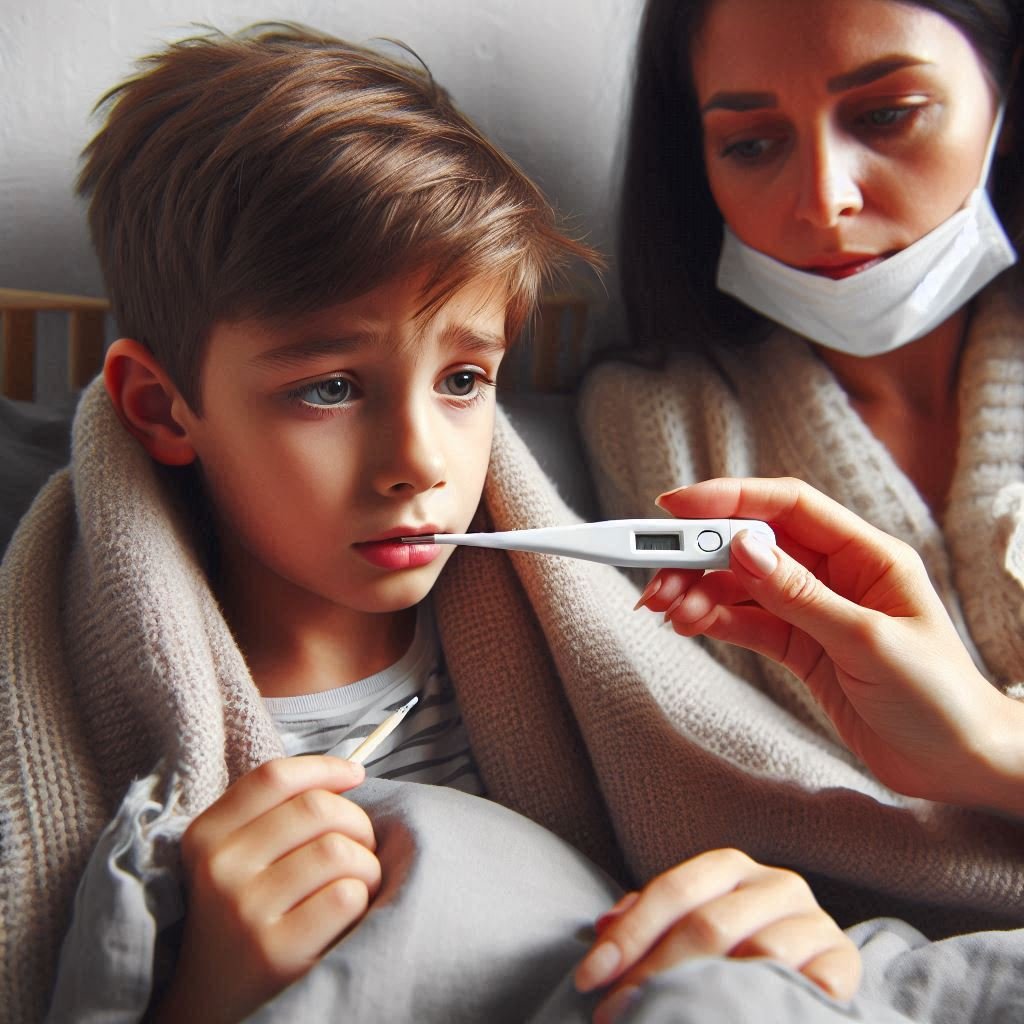
What is typhoid
Typhoid disease is caused by a bacteria known as salmonella typhi. It can be a serious and potentially life-threatening illness if left untreated.
As per data released by WHO in 2019 approximately 9 million people get sick from typhoid and 110 000 people die from it every year.
History
Ancient Times: Its fever likely existed in ancient times, although it wasn’t specifically identified as a distinct disease. Historical records suggest that outbreaks resembling typhoid fever occurred in various civilizations, including ancient Greece and Rome.

19th Century: The modern understanding of fever began to emerge in the 19th century. In the mid-19th century, physicians like Pierre-Charles-Alexandre Louis and William Jenner made significant contributions to the understanding and diagnosis of the disease.
Typhoid Mary: One of the most infamous figures in the history of fever is Mary Mallon, also known as “Typhoid Mary.” She was a cook in New York City in the early 20th century and was an asymptomatic carrier of Salmonella Typhi. Mallon unwittingly spread the disease to numerous people through her cooking, leading to several outbreaks. Her case highlighted the importance of identifying carriers of infectious diseases.
Causes
Common causes and risk factors for its transmission include:
Contaminated Food and Water: Consuming food or water contaminated with fecal matter containing the Salmonella Typhi bacteria is the most common mode of transmission. This can happen through the use of contaminated water for drinking or washing food, or through the consumption of food handled by someone with the infection who didn’t practice proper hygiene.
Poor Sanitation: In regions with inadequate sanitation infrastructure, such as lack of clean water supply and proper waste disposal systems, the risk of typhoid fever transmission is higher.

Close Contact: Direct contact with an infected person’s feces or urine can also spread the bacteria. This can occur through poor hygiene practices, such as inadequate handwashing after using the toilet.
Travel: Traveling to areas where typhoid fever is endemic, especially in developing countries with poor sanitation, increases the risk of exposure to the bacteria.
Carriers: Some individuals may become chronic carriers of Salmonella Typhi, meaning they continue to harbor the bacteria in their intestines or gallbladders even after recovering from the acute illness. These carriers can unknowingly spread the bacteria to others through fecal shedding.
Symptoms
The symptoms of its fever typically develop gradually, usually within 1 to 3 weeks after exposure to the bacteria. The severity of symptoms can vary from mild to severe, and some individuals may experience only mild symptoms or none at all, but they can still spread the disease to others. Common symptoms include:

Sustained Fever: A sustained high fever, often reaching 103–104°F (39–40°C), is a hallmark symptom of it. The fever may gradually increase over several days.
Weakness and Fatigue: Feelings of weakness, fatigue, and malaise are common, often accompanied by a general sense of discomfort.
Abdominal Pain: Abdominal pain and tenderness, particularly in the area around the navel, are typical. Some people may experience a swollen abdomen.
Headache: Persistent headaches are common, often described as dull and continuous.
Loss of Appetite: A decrease in appetite and subsequent weight loss may occur.

Diarrhea or Constipation: Some individuals may experience diarrhea or constipation, or they may alternate between the two.
Rash: In some cases, a rose-colored rash of flat, non-itchy spots may appear on the trunk of the body. This rash is known as “rose spots.”
Cough: A non-productive cough may develop, and in severe cases, pneumonia can occur as a complication.
Other Symptoms: Other symptoms may include muscle aches, joint pain, confusion, delirium, and in severe cases, neurological symptoms like hallucinations or seizures.
Tests
Blood Cultures: Blood cultures are the most definitive way to diagnose it. A sample of blood is collected and incubated in a culture medium to detect the presence of Salmonella Typhi bacteria. Blood cultures typically take 1 to 7 days to yield results.

Stool Cultures: Stool cultures may be performed to detect Salmonella Typhi bacteria in the feces of suspected cases. However, stool cultures are less sensitive than blood cultures and may yield false-negative results, especially later in the course of the illness.
Bone Marrow Culture: In some cases, particularly when blood cultures are negative but this fever is strongly suspected, a bone marrow culture may be performed. Bone marrow cultures have a higher sensitivity for detecting Salmonella Typhi and may be useful for confirming the diagnosis.
Widal Test: The Widal test is a serological test that detects antibodies against specific antigens of Salmonella Typhi in the patient’s blood. However, the Widal test has limitations, including variability in interpretation and cross-reactivity with antibodies from other infections or vaccinations. It is not recommended for routine diagnosis and is often used in conjunction with other tests.
PCR Testing: Polymerase chain reaction (PCR) testing can detect the genetic material of Salmonella Typhi in blood, stool, or other clinical specimens with high sensitivity and specificity. PCR testing may provide faster results compared to culture-based methods but may not be widely available in all settings.
Treatment and preventions

Vaccination: Vaccination is an effective way to prevent typhoid fever, especially for individuals traveling to regions where the disease is endemic or for those at increased risk of exposure due to occupation or living conditions. There are two main types of typhoid vaccines: the injectable Vi polysaccharide vaccine and the oral live attenuated Ty21a vaccine. These vaccines provide varying degrees of protection against typhoid fever and should be administered according to the recommended schedule.
Food and Water Safety: Practicing good food and water hygiene is essential to prevent it. This includes:
- Drinking only safe water, such as bottled or boiled water, or water treated with chlorine or iodine tablets.
- Avoiding consumption of raw or undercooked foods, particularly seafood and meats.
- Washing hands thoroughly with soap and water before eating or handling food, and after using the toilet.
- Avoiding ice cubes made from untreated water and consuming beverages prepared with safe water and ingredients.
- Choosing foods that are freshly cooked and served hot.
Personal Hygiene: Practicing good personal hygiene can help prevent the spread of typhoid fever. This includes:

- Washing hands frequently with soap and water, especially after using the toilet, changing diapers, or caring for someone who is sick.
- Using hand sanitizer with at least 60% alcohol if soap and water are not readily available.
- Properly disposing of feces in a sanitary manner, particularly in areas with poor sanitation infrastructure.
Health Education: Educating individuals and communities about the transmission of typhoid fever and the importance of preventive measures is crucial for disease control. This includes raising awareness about safe food and water practices, vaccination recommendations, and the signs and symptoms of typhoid fever.
Travel Precautions: Travelers to regions where typhoid fever is endemic should take additional precautions to reduce their risk of exposure. This may include receiving typhoid vaccination before travel, adhering to food and water safety guidelines, and seeking medical care promptly if symptoms of typhoid fever develop during or after travel.

FAQ (frequently asked questions)
1. What is typhoid fever? Ans. Typhoid fever is a bacterial infection caused by Salmonella Typhi bacteria. It can lead to a prolonged fever, abdominal pain, weakness, and other symptoms.
2. How is typhoid fever transmitted? Ans. Typhoid fever is primarily transmitted through ingestion of food or water contaminated with Salmonella Typhi bacteria. It can also spread through close contact with an infected person.
3. What are the symptoms of typhoid fever? Ans. Common symptoms include sustained fever, weakness, abdominal pain, headache, loss of appetite, and sometimes a rash. Symptoms may vary in severity.
4. How is typhoid fever diagnosed? Ans. Diagnosis often involves blood cultures to detect the presence of Salmonella Typhi bacteria. Other tests may include stool cultures, bone marrow culture, or serological tests.
5. What is the treatment for typhoid fever? Ans. Treatment typically involves antibiotics to eliminate the bacteria. Supportive care, such as hydration and symptom management, may also be provided. Hospitalization may be necessary for severe cases.
6. How can typhoid fever be prevented? Ans. Preventive measures include vaccination, practicing good hygiene, ensuring food and water safety, and avoiding high-risk foods and drinks, especially when traveling to endemic areas.
7. Who should get vaccinated against typhoid fever? Ans. Vaccination is recommended for individuals traveling to regions where typhoid fever is endemic, especially if they will be exposed to unsanitary conditions or have close contact with locals. It may also be recommended for certain occupations and for individuals with underlying health conditions.
8. How effective are typhoid vaccines? Ans. Typhoid vaccines are generally effective in preventing typhoid fever, although no vaccine provides 100% protection. The level of protection may vary depending on the type of vaccine and other factors.
9. What are the risks of typhoid fever? Ans. Untreated typhoid fever can lead to severe complications, including intestinal perforation, peritonitis, pneumonia, and even death, particularly in untreated or poorly managed cases.
10. What should I do if I suspect I have typhoid fever? Ans. If you experience symptoms of typhoid fever, such as persistent fever, abdominal pain, or weakness, seek medical attention promptly. A healthcare provider can diagnose the illness and recommend appropriate treatment.
11.what food to be eat so we can recover fast from typhoid? Ans. fish, eggs, chicken, boiled potato, carrots, beets, watermelon, grapes, ripe bananas, porridge, daliya, white rice and etc.
12.What food should we avoid in typhoid? Ans. raw fruits, vegetables, oats, whole grains, nuts, and legumes.
Conclusion
Typhoid fever remains a significant public health challenge, particularly in regions grappling with inadequate sanitation and hygiene infrastructure. While advancements in medical science have improved diagnosis and treatment options, the burden of typhoid fever persists, underscoring the need for comprehensive prevention strategies.
Table of Contents
Read more about typhoid
Go and visit dusearchit.in and get more knowledge about others topics.
